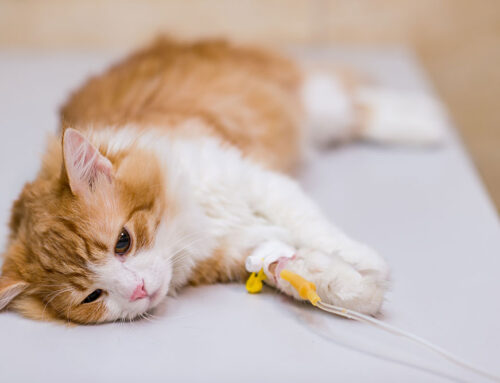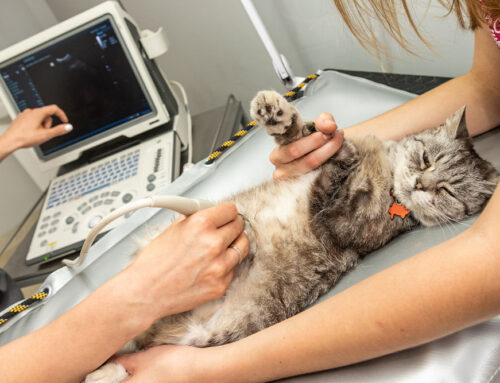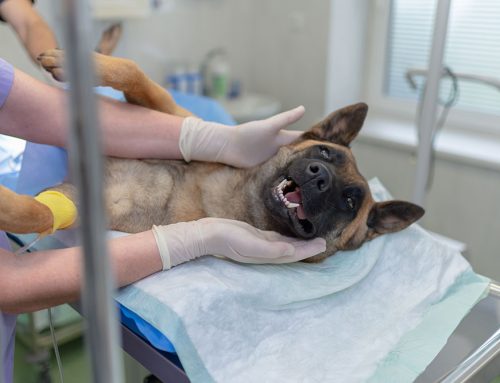Adopting a new pet is an exciting but serious decision that should come only after careful consideration and the acknowledgement that pets are a lifelong commitment. When pet adoption is unplanned, impulsive, or rushed, pets needlessly suffer. Between 7% to 20% of adopted dogs and cats are returned to the shelter less than six months after their adoption—and more than half the returned dogs were taken back in 30 days.
These sad statistics are completely preventable with thoughtful planning and preparation. Our Burlington Veterinary Center team offers this five-step guide to pet adoption success.
#1: Research your potential pet to ensure the right fit
From iguanas to Icelandic sheepdogs, pot-bellied pigs to Persian cats, nearly every type of pet, including purebreds, is available for adoption. However, a pet’s availability does not indicate practicality, and many species and breeds are incompatible with typical domestic life.
Identifying a pet species or breed that you find appealing is a great place to begin your search. Once you have an initial list, make another list of what you can offer a pet, including:
- Time — How much time and attention can you give a pet? Consider daily activities, such as one-on-one interaction, physical exercise, basic care (i.e., husbandry), and play.
- Temperament — Are you laid-back or up-and-at-’em? What pet personality would match your energy?
- Support system — Who will provide for the pet when you are unavailable? Does everyone in the home agree on the pet?
- Money — Can you budget for the pet’s supplies, veterinary care, food, and any ongoing costs (e.g., grooming, and flea, tick, and heartworm prevention products)? If your pet of interest is prone to health issues, can you afford treatment?
- Space — Do you live on an acreage or in a postage-stamp-sized apartment? What pet would be comfortable in your space?
- Resources — Will this pet need training, or a “job” to burn off excess energy? Can you provide a species-appropriate environment that lets the pet practice natural behaviors?
#2: Gather all necessary pet supplies
Once you’ve settled on a pet, determine what you need to keep them safe and to feel at home. Assembling all the necessary supplies in advance can help you feel less anxious about your new pet’s arrival, and lets you focus on them.
Supplies will vary greatly depending on your pet, but consider these general categories:
- Security and confinement — Crates, pens, collars and leashes, cages, aquariums, and baby gates can safely define and restrict your pet’s access to off-limits areas.
- Safety — Pet-proofing items should include vent and electrical cord covers, childproof latches, anti-scratch tape, and automatic door closures.
- Comfort — Consider their bedding, substrate, and non-slip flooring to ensure their comfort.
- Food and water — Feed the pet’s current diet to prevent stomach upset, stress, or food refusal. Pocket pets and small mammals may need a water bottle, not a bowl.
- Privacy — Boxes for hiding, crate covers, and visual barriers can help new pets feel safe.
- Enrichment — Your new pet will need appropriate toys, chew items, food puzzles, and games, as well as structures to satisfy their physical needs, such as a scratching post, a safe space to run, or elevated areas to hide and observe.
- Hygiene — Stock up on pet-safe cleaners and disinfectants, litter boxes and litter, poop bags, a scoop, and supplies to safely dispose of pet waste.
#3: Plan your pet’s arrival and first week
Try to schedule your pet’s adoption date or arrival when you have several days or a long weekend to dedicate to their transition. Although everyone will be keen to welcome the newcomer, minimize any disruptions and activity (i.e., visitors, fellow pets), to give your pet time to acclimate.
From day one, establishing a routine is important for your pet. Puppies will need escorting frequently to their elimination area (e.g., outside, potty pads) and should be fed small meals at regular intervals. All species will benefit from consistent food, exercise, and rest schedules—predictability helps pets adapt more quickly to change.
If your pet appears frightened or overwhelmed, keep them in their secure area, in peace and quiet. Although staying close by is wise, many pets will feel anxious and uncomfortable from direct observation (i.e., staring) and frequent handling, petting, and talking.
#4: Provide prompt veterinary care
After the first few days at home, bring your pet to Burlington Veterinary Center for a physical examination. Although shelters provide vaccinations, deworming, and spay or neuter procedures for dogs and cats, a health assessment by our veterinary team can identify any current or future health concerns, socialize your pet to the veterinary experience, and allow us to answer your questions about your new friend’s care.
#5: Train and socialize your new pet

Behavior-related problems are one of the primary reasons why pets are returned to shelters. Training and socialization help your pet become well-behaved, easier to care for, and more adaptable to change. While training is most often associated with dogs, all species are more likely to live long and happy lives when they understand basic life skills, including:
- Handling and restraint — Lifting, holding, body handling, and carrying
- Transportation — Acclimating to the carrier or crate, and your car
- Basic grooming — Accepting brushing, nail trimming, bathing, and ear cleaning
- New people and places — Responding to new stimuli without aggression or fear
- Engagement — Positive interactions and associations with their owner built on play, petting, or food rewards
From your pet’s first day and throughout their life, let Burlington Veterinary Center be your resource for expert pet care. For local shelter or rescue recommendations, or to schedule your new pet’s first visit, contact our team.







Leave A Comment